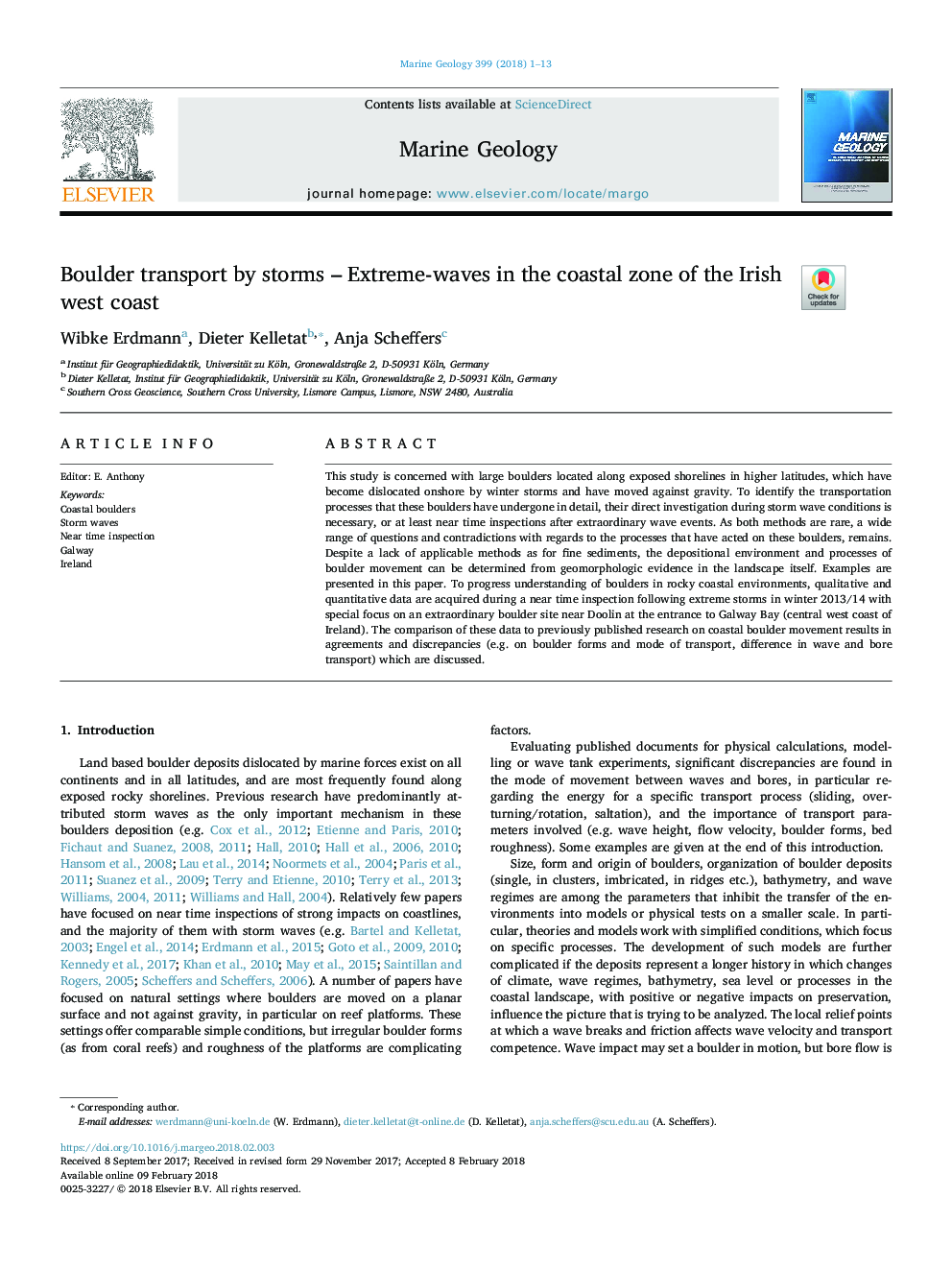| Article ID | Journal | Published Year | Pages | File Type |
|---|---|---|---|---|
| 8911981 | Marine Geology | 2018 | 13 Pages |
Abstract
This study is concerned with large boulders located along exposed shorelines in higher latitudes, which have become dislocated onshore by winter storms and have moved against gravity. To identify the transportation processes that these boulders have undergone in detail, their direct investigation during storm wave conditions is necessary, or at least near time inspections after extraordinary wave events. As both methods are rare, a wide range of questions and contradictions with regards to the processes that have acted on these boulders, remains. Despite a lack of applicable methods as for fine sediments, the depositional environment and processes of boulder movement can be determined from geomorphologic evidence in the landscape itself. Examples are presented in this paper. To progress understanding of boulders in rocky coastal environments, qualitative and quantitative data are acquired during a near time inspection following extreme storms in winter 2013/14 with special focus on an extraordinary boulder site near Doolin at the entrance to Galway Bay (central west coast of Ireland). The comparison of these data to previously published research on coastal boulder movement results in agreements and discrepancies (e.g. on boulder forms and mode of transport, difference in wave and bore transport) which are discussed.
Keywords
Related Topics
Physical Sciences and Engineering
Earth and Planetary Sciences
Geochemistry and Petrology
Authors
Wibke Erdmann, Dieter Kelletat, Anja Scheffers,
